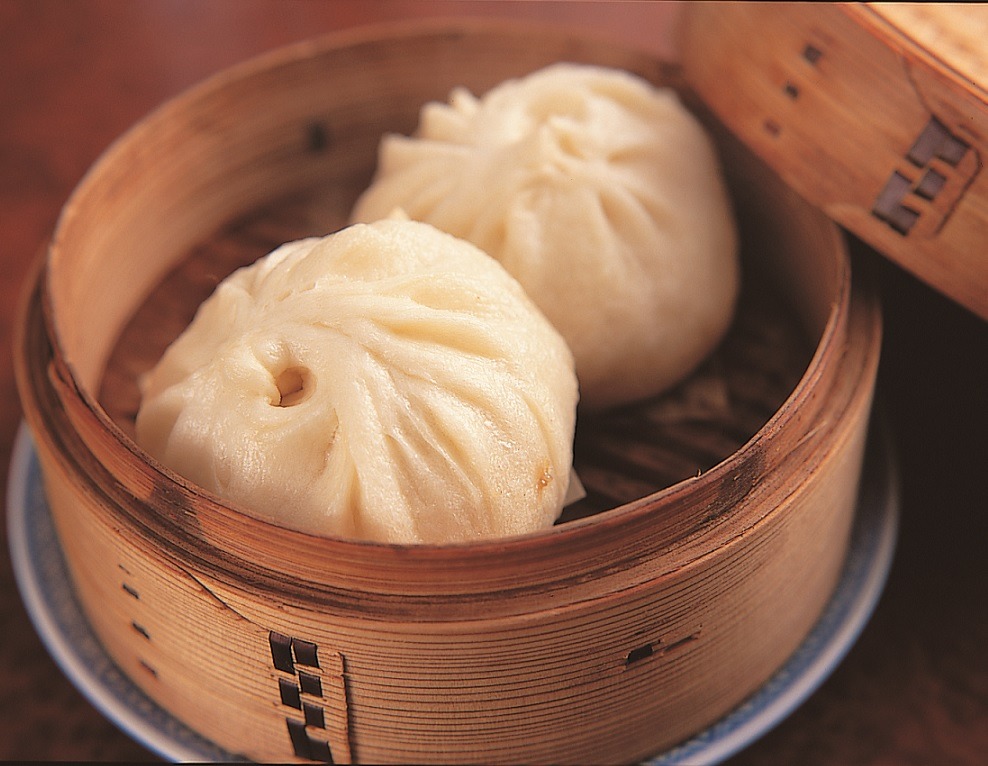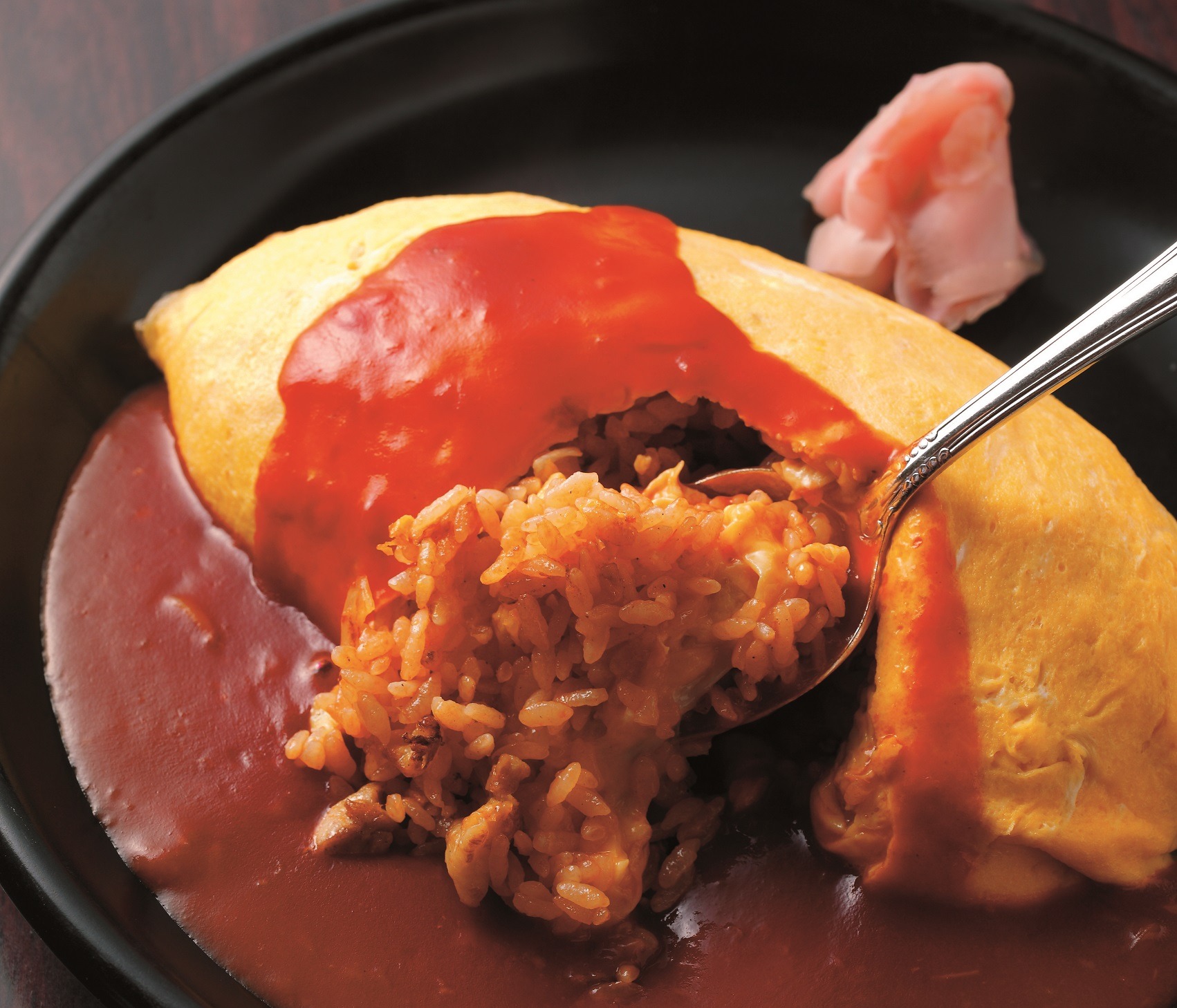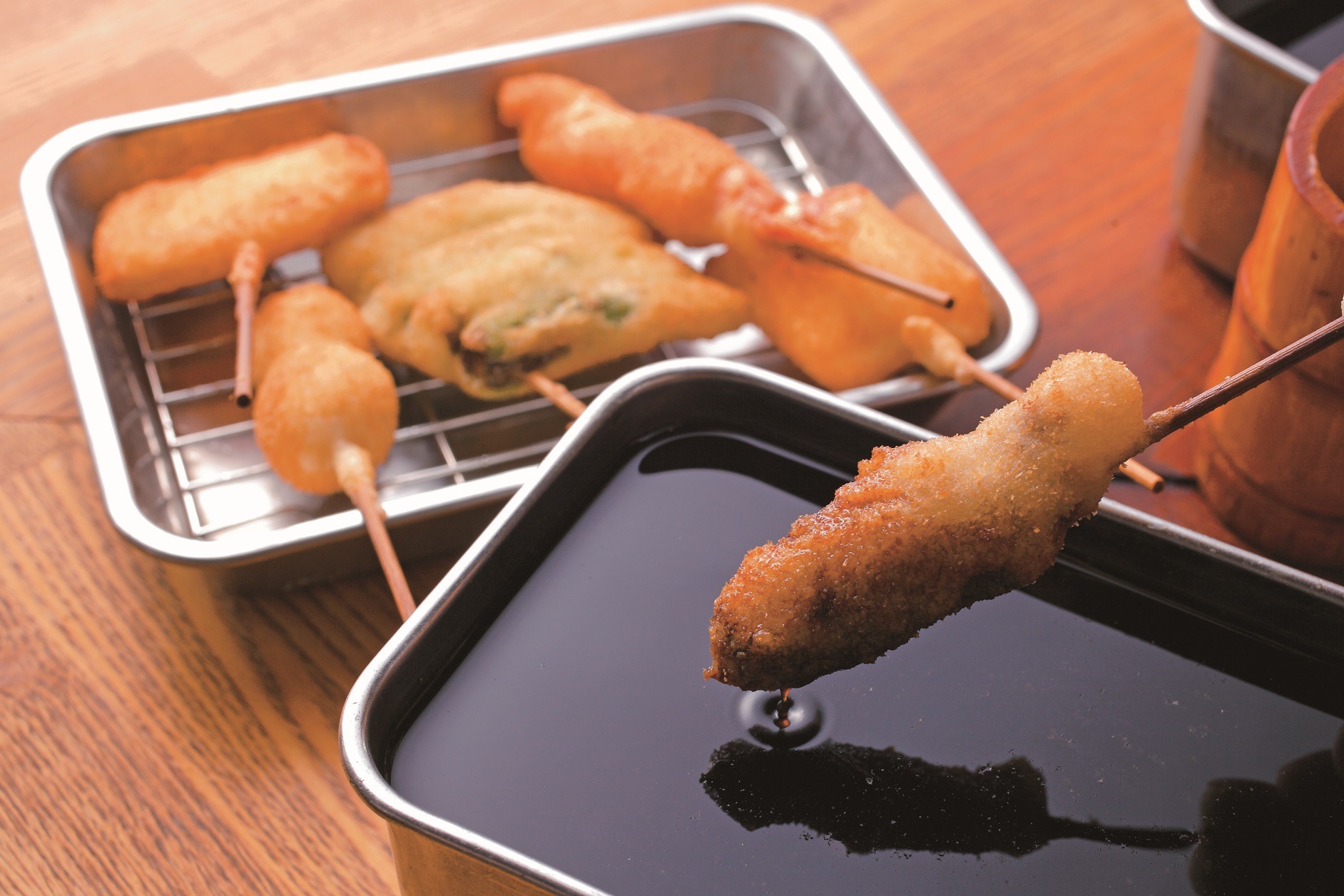豚まん

小麦粉と水を主原料にした生地を発酵させた皮で、具を包み蒸した饅頭です。
具は、豚肉と玉ネギ、ほかにタケノコや干し椎茸など野菜のみじん切りを入れる店もあります。
明治維新後、中華街に伝えられた中華饅頭を日本人好みの味にアレンジしたものが始まりとされています。

大阪では、関東風に「肉まん」という名で売れば「牛肉が入っていない」とクレームになると言われます。「肉」と言えば、大阪では牛肉を指すのです。豚肉を用いるので、関西では「豚まん」と呼びます。
テレビのコマーシャルでもお馴染みの有名店は、関西一円に出店し、1日17万個も売り上げるとか。大きくずっしりと重いものもあれば、小ぶりで皮の薄いものなど、大阪にはたくさんの豚まん専門店があります。
その他のおすすめグルメ
-
 うどん(うどんすき)
うどん(うどんすき)大阪のおうどんは、軟らかい口当たりの麵と、それに優しく寄り添う昆布とカツオ節のだしとのハーモニーが魅力です。
-
 たこ焼き
たこ焼き屋台で買って、気軽に街角で食べられる、大阪のファストフードの代表格・たこ焼き。歴史は意外に浅く、昭和30年代から、町に店が増え始めたと言われます。
-
 大阪すし
大阪すし大阪すしの代表格は箱寿司です。具材を酢飯と共に型に入れて押し固める「押し寿司」の一つです。
-
 オムライス
オムライス胃の悪い常連客が毎日オムレツと白ご飯を食べているのを不憫に思った店主が、ケチャップライスを薄焼き卵で包んで出したところ、客は大喜び。
-
 お好み焼き
お好み焼きたこ焼きと並ぶ、大阪人のソウル・フードです。小麦粉をだしで溶くのも同じで、具はキャベツが必須、豚肉が人気、あとはお好み焼きの名の通り、好みのままに。鉄板の上で丸く平たく生地を広げて焼き上げます。
-
 串カツ
串カツ「二度漬け禁止」で有名な大阪の串カツ。肉や野菜を串に刺し、水溶き小麦粉の衣にパン粉を付けて油で揚げます。
-
 割烹料理
割烹料理江戸時代に栄えた料亭が廃れ始め、もっと気軽に楽しめる和食店を時代が求める中、生まれたのが割烹スタイルです。
-
 紙なべ
紙なべ摩訶不思議な紙なべも大阪発祥です。紙を火に掛けるなんてと誰もが驚くことでしょう。
-
 回転寿司
回転寿司コンベヤーの上を、寿司を載せた小皿が流れていき、客は好みのものを皿ごと取って食べます。半セルフサービス型の安価で明朗会計の気軽なスタイルは、家族連れや観光客にも利用しやすく大人気を得ています。




